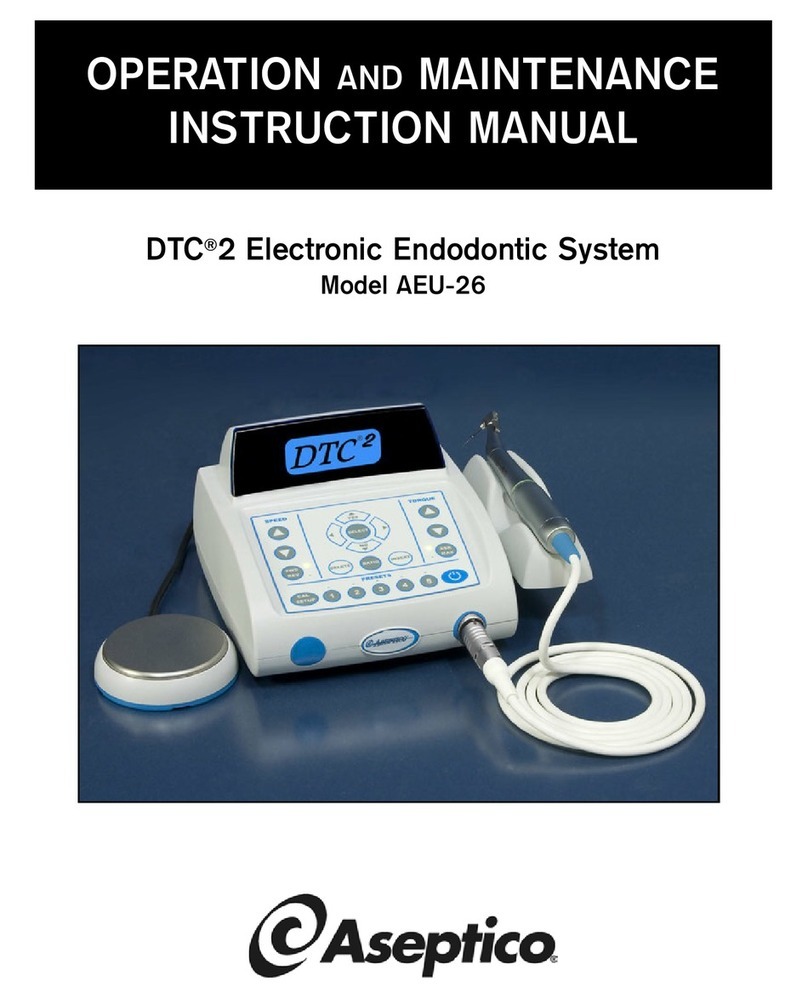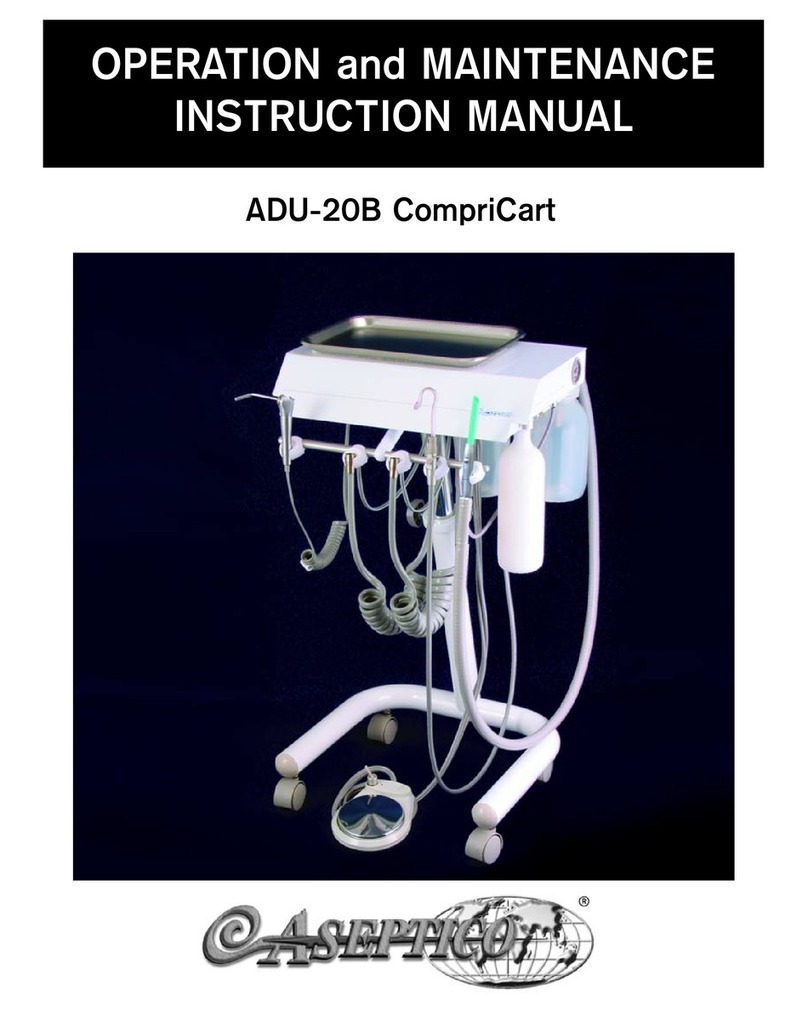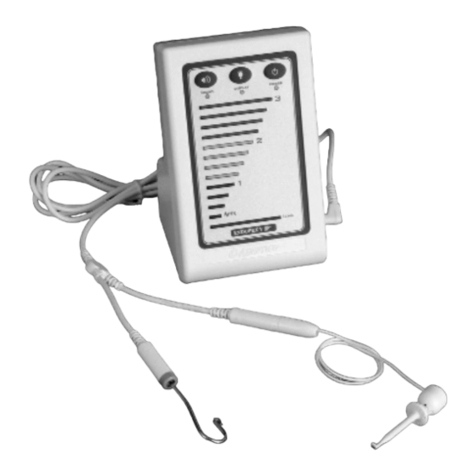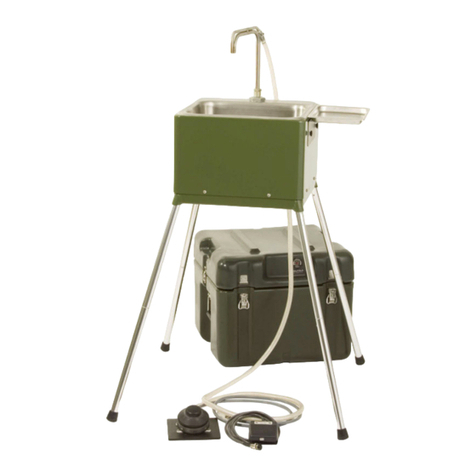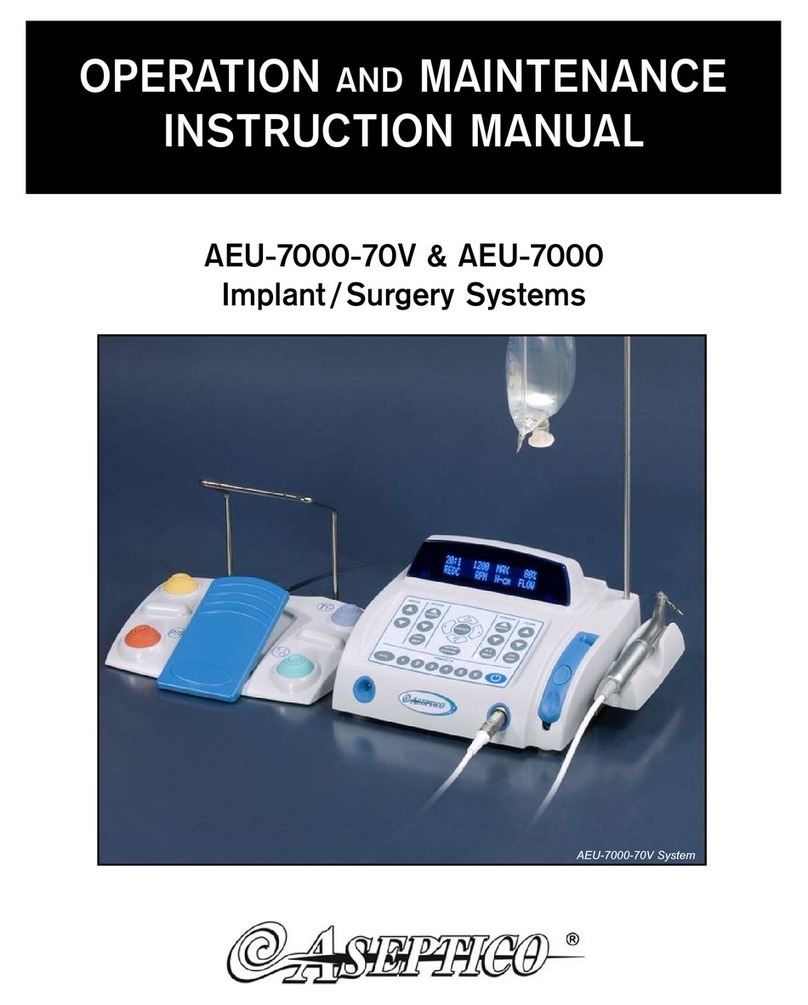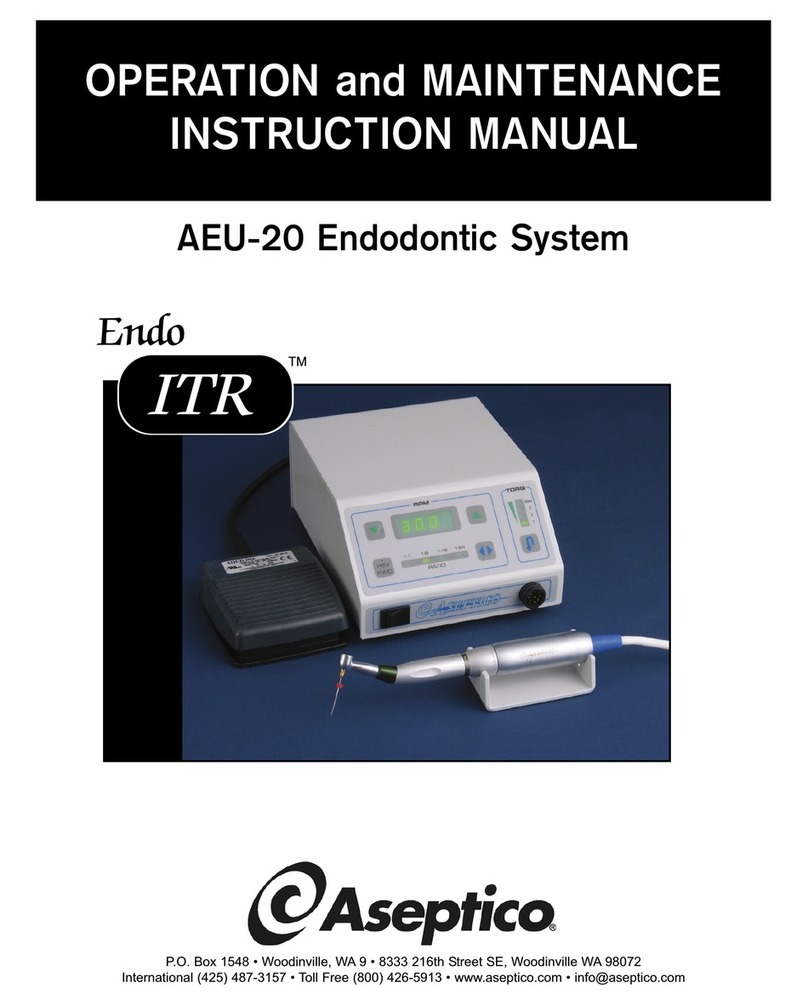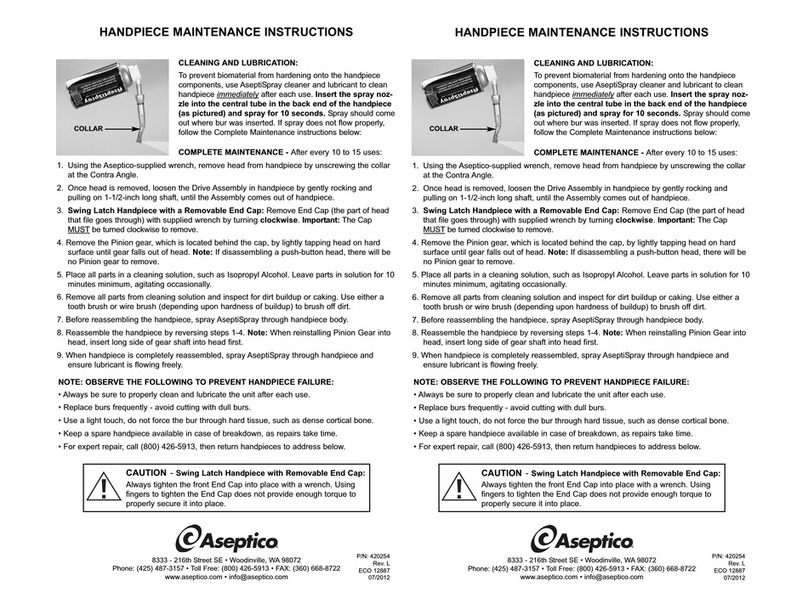6.
c.) Unscrew and remove Bottle from cap.
d.) Fill Bottle with clean water.
e.) Screw Bottle into the Water Reservoir
Connector.
f.) Plug in the power cord.
6. HVE and SALIVA EJECTOR VACUUMS:
The Express Air is equipped with a 5-liter Waste
Tank, a High Volume (HVE) hose, and a Low
Volume (Saliva Ejector) hose. Both High and
Low Volume systems operate simultaneously
from the same vacuum source. To gain vacuum
on the HVE, open the HVE valve to full open and
close the Saliva Ejector Valve. To gain vacuum
on the Saliva Ejector, close the HVE and open
the Saliva Ejector to full open.
The vacuum Waste Tank contains a ball float
shutoff to prevent accidental overflow. The Tank
should be emptied when it is ¾ full.
The High Volume (HVE) vacuum system con-
tains a screen inside the Waste Tank container.
The screen is used for collecting large debris
upon vacuum intake. Clean screen when neces-
sary.
To empty the Waste Container:
a.) Unplug the power cord.
b.) Disconnect the hoses.
c.) Empty container.
d.) Reconnect hoses.
e.) Plug in power cord.
7. CAVITRON WATER OUTLET:
Provides water via standard 1/4” quick discon-
nect to independent Cavitron or scaler units
requiring a water supply.
The waste container has a ball float shutoff to
prevent accidental overflow. If the waste container
becomes full and the ball float activates, the vacu-
um motor may not restart, and could potentially
blow the fuse. Immediately empty waste container
to continue operation.
NOTE:
OPERATION FUNCTIONS:
1. ON/OFF SWITCH:
Turns the ADU-17A system On or Off.
2. AIR FOOT CONTROL:
The handpiece only operates when the foot
pedal is depressed. When the foot pedal is not
being used, the vacuum and syringe remain
operational
3. HANDPIECE CONTROLS:
a.) Off/On Coolant Toggle Switch - Turns
Handpiece water coolant On/Off.
b.) Air Control Switch - Allows adjustment of air
pressure to the Handpiece.
c.) Coolant Control Switch - Allows adjustment
of water coolant to the Handpiece.
4. THREE-WAY AIR/WATER SYRINGE:
- Pressing the left button dispenses water.
- Pressing the right button dispenses air.
- Pressing both buttons simultaneously
dispenses an air/water mist.
5. WATER SUPPLY BOTTLE:
The Express Air incorporates a self contained
pressurized water system. This system consists
of a 1-liter white bottle, which dispenses water
through the handpiece and 3-Way Air/Water
Syringe. The Water Supply Bottle threads into
the Reservoir Connector, located in the upper
right corner of the case.
To refill the Water Supply Bottle:
a.) Before removing the Bottle for refilling,
unplug the power cord from the Express Air
unit.
b.) Release pressure from Bottle by slightly
loosening bottle from reservoir connector
approximately 1/8-turn, or by depressing the
air button on the 3-Way Syringe.
THE WATER SUPPLY BOTTLE IS
PRESSURIZED DURING OPERATION.
DEPRESSURIZE BOTTLE BEFORE
REMOVAL BY SLIGHTLY LOOSENING
BOTTLE FROM RESERVOIR CONNEC-
TOR.
WARNING:
